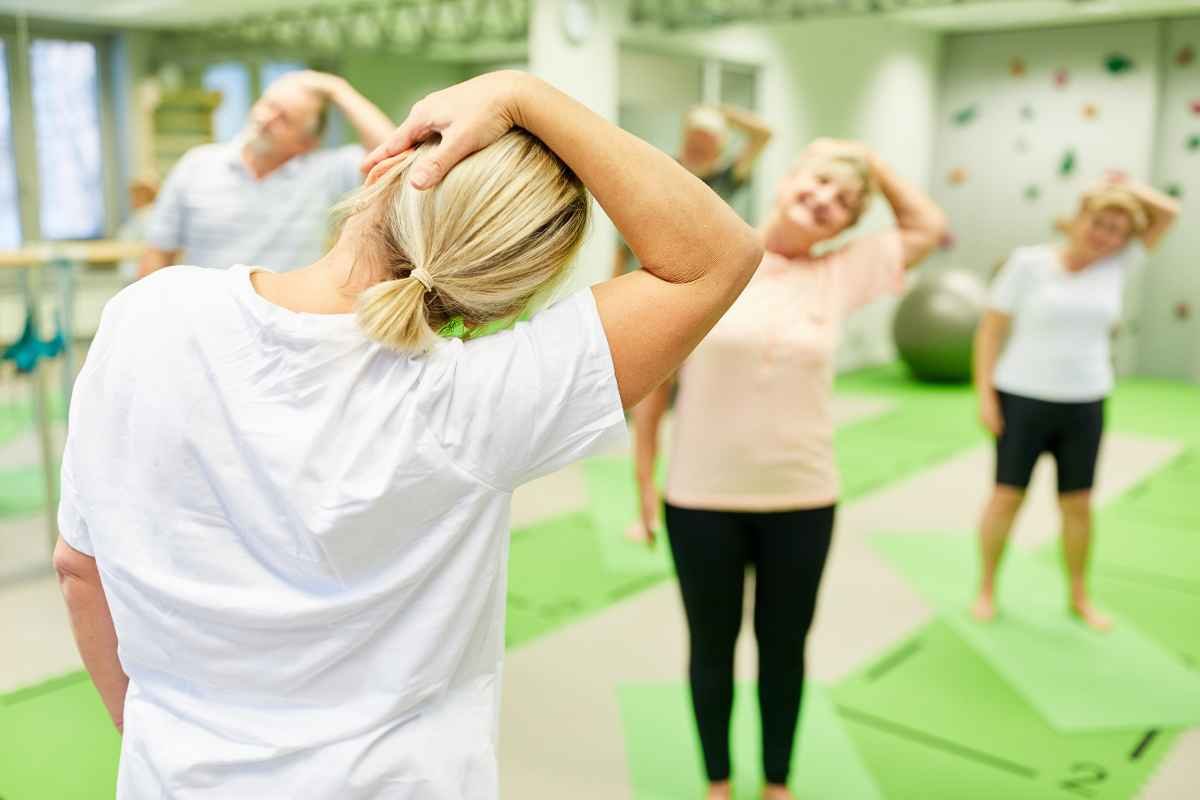Neck pain is a common issue in today’s fast-paced world, where many of us spend long hours hunched over desks, staring at screens, or engaging in repetitive activities that strain the neck muscles. The good news is that there are simple yet effective exercises that can help alleviate this discomfort and enhance mobility.
One such exercise is the Cervical Rotation Exercise. This exercise is gaining popularity among fitness enthusiasts and medical professionals alike due to its ability to reduce neck stiffness, improve posture, and relieve pain. In this article, we’ll dive deep into what the cervical rotation exercise is, how it works, and why it should be a staple in your daily routine for maintaining optimal neck health.
What is a Cervical Rotation Exercise?
The Cervical Rotation Exercise specifically targets the muscles and joints in the neck, promoting flexibility and strength. Unlike other neck exercises, which may focus solely on stretching or strengthening, cervical rotation integrates both. The exercise involves turning your head from one side to another while keeping your shoulders stable. This motion helps to enhance the range of motion in the cervical spine and can be beneficial for those experiencing stiffness or discomfort in the neck area.
Cervical rotation is essential because the neck, or cervical spine, plays a critical role in supporting the head and allowing a wide range of movements. Over time, poor posture, lack of movement, or even stress can lead to reduced cervical mobility, making everyday activities like driving, working at a computer, or even looking around uncomfortable or painful. By incorporating these exercises into your daily routine, you can help maintain neck flexibility and prevent or alleviate pain.
Benefits of Cervical Rotation Exercise

- Improves Neck Mobility: The primary benefit of the Cervical Rotation Exercise is enhanced mobility of the cervical spine. Regular practice helps in maintaining a full range of motion, which is crucial for daily activities.
- Reduces Neck Pain: Many people suffer from neck pain due to prolonged periods of sitting, poor posture, or stress. The cervical rotation exercise helps to alleviate tension in the neck muscles, which can significantly reduce pain.
- Prevents Injuries: Keeping the neck muscles strong and flexible can prevent common injuries related to sudden movements or poor posture. The cervical rotation exercise strengthens the muscles surrounding the neck, making them less susceptible to strains.
- Enhances Blood Circulation: Performing this exercise stimulates blood flow to the neck and surrounding areas, ensuring that the muscles receive sufficient oxygen and nutrients. This is crucial for muscle recovery and overall health.
- Promotes Better Posture: Regular practice of cervical rotation exercises can help correct poor posture by aligning the cervical spine properly, which in turn reduces the risk of developing posture-related issues over time.
- Relieves Stress and Tension: Gentle neck exercises like cervical rotation can also have a calming effect, reducing stress and tension accumulated in the neck and shoulder regions.
How to Perform the Cervical Rotation Exercise Correctly?
To achieve the maximum benefits of the Cervical Rotation Exercise, it’s important to perform it correctly. Here is a step-by-step guide:
- Find a Comfortable Position: Start by sitting or standing in a comfortable position. Ensure that your back is straight and your shoulders are relaxed.
- Begin the Rotation: Slowly turn your head to the right side, aiming to align your chin with your shoulder. Hold this position for 3-5 seconds, feeling the stretch in your neck muscles.
- Return to the Center: Gradually return your head to the starting position, maintaining control throughout the movement.
- Rotate to the Opposite Side: Repeat the rotation by turning your head to the left side, again holding for 3-5 seconds.
- Repeat the Exercise: Perform this exercise 10-15 times on each side, depending on your comfort level and any recommendations from your healthcare provider.
Variations of the Cervical Rotation Exercise

To add variety to your routine and target different aspects of neck mobility, consider incorporating these variations of the Cervical Rotation Exercise:
- Seated Cervical Rotation: This variation is performed while seated on a chair with your back straight and shoulders relaxed. It is ideal for individuals who have difficulty standing for long periods or those who prefer to exercise while seated.
- Assisted Cervical Rotation: Use your hand to gently guide your head during the rotation. This provides additional support and helps you achieve a deeper stretch, especially if you are experiencing significant neck stiffness.
- Isometric Cervical Rotation: Instead of moving your head, use your hand to provide resistance as you try to rotate your head. This variation helps in strengthening the muscles involved in cervical rotation.
- Dynamic Cervical Rotation: Incorporate the cervical rotation exercise into dynamic movements, such as shoulder rolls or arm swings, to increase the range of motion and engage additional muscles.
When to Perform Cervical Rotation Exercises?
Consistency is key when it comes to reaping the benefits of the Cervical Rotation Exercise. Here are some ideal times to include this exercise in your routine:
- Morning Routine: Start your day with a few sets of cervical rotations to wake up your neck muscles and prepare them for the day’s activities.
- During Breaks at Work: If you have a desk job, incorporate cervical rotations during short breaks to relieve tension and prevent stiffness.
- Post-Workout Stretching: After a workout, perform cervical rotations to cool down and stretch the neck muscles, ensuring they remain flexible.
- Before Bed: Performing gentle cervical rotations before bed can help relieve any accumulated tension and promote relaxation.
Common Mistakes to Avoid

To get the most out of the Cervical Rotation Exercise, avoid these common mistakes:
- Moving Too Quickly: Rapid movements can strain the neck muscles. Always perform cervical rotations slowly and with control.
- Overstretching: Trying to force your head too far during the rotation can cause discomfort or injury. Stretch only to a point where you feel mild tension, not pain.
- Improper Posture: Slouching or hunching your shoulders while performing the exercise can negate its benefits. Keep your back straight and shoulders relaxed.
- Holding Your Breath: Remember to breathe deeply and naturally throughout the exercise. Holding your breath can create unnecessary tension in your body.
Frequently Asked Questions About Cervical Rotation Exercise
1. Who Should Do Cervical Rotation Exercises?
This exercise is suitable for most people, including those with mild to moderate neck pain, office workers, athletes, and seniors looking to maintain mobility. However, individuals with severe neck injuries or conditions should consult a healthcare professional before starting any new exercise regimen.
2. How Often Should I Perform These Exercises?
For general maintenance of neck health, performing the exercise 2-3 times per day is usually sufficient. However, if you have specific concerns or conditions, consult a professional for personalized recommendations.
3. Can Cervical Rotation Exercise Help with Headaches?
Yes, it can. Tension headaches often stem from muscle tightness in the neck and upper back. Regularly performing these exercises can relieve this tension, potentially reducing the frequency and severity of headaches.
4. Are There Any Risks Associated with this Exercise?
When done correctly, the Cervical Rotation Exercise is generally safe. However, overdoing it or performing it incorrectly can cause strain or injury. Always listen to your body and consult a professional if you experience pain or discomfort.

9 Best Pillows for Every Type of Neck Pain
Common causes of neck discomfort include poor posture, long periods of sitting, hunching over the phone, and overall strain on the muscles that support the head.
Conclusion
Incorporating the Cervical Rotation Exercise into your daily routine is a simple yet effective way to enhance neck mobility, reduce pain, and improve overall posture. Whether you are looking to alleviate existing discomfort or prevent future issues, this exercise offers a range of benefits that can significantly contribute to your well-being. Remember to perform the exercise with proper form and consistency, and consult a healthcare professional if you have any concerns or pre-existing conditions. Prioritizing neck health is crucial, and the cervical rotation exercise is an excellent step toward achieving it.
By making cervical rotation exercises a regular part of your fitness regimen, you can enjoy a more flexible, pain-free neck and a healthier, more active lifestyle. Start today and feel the difference!







